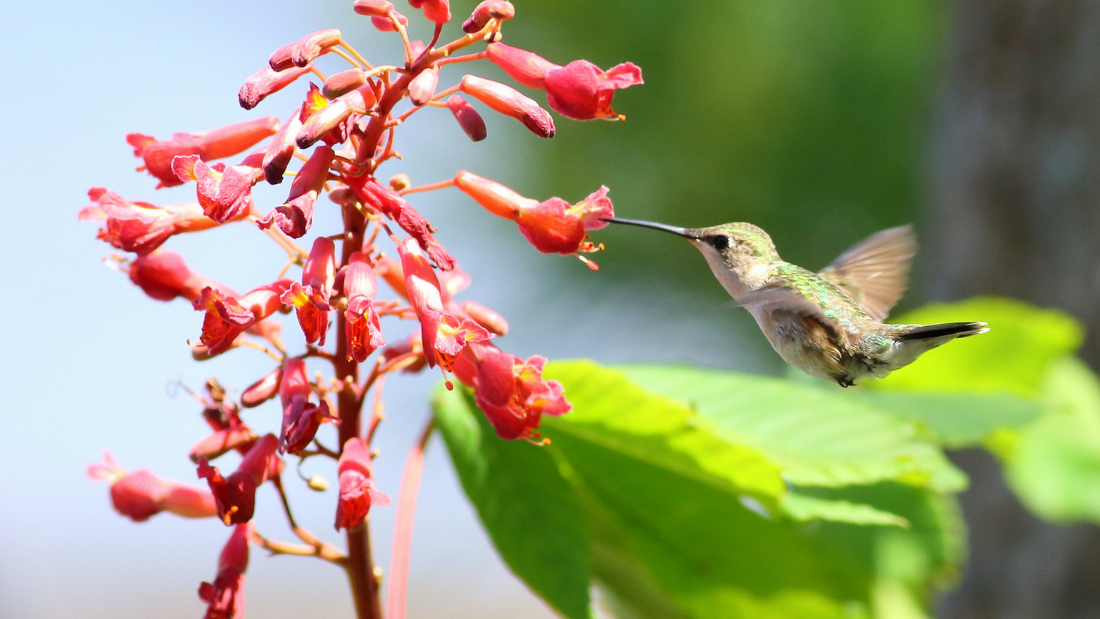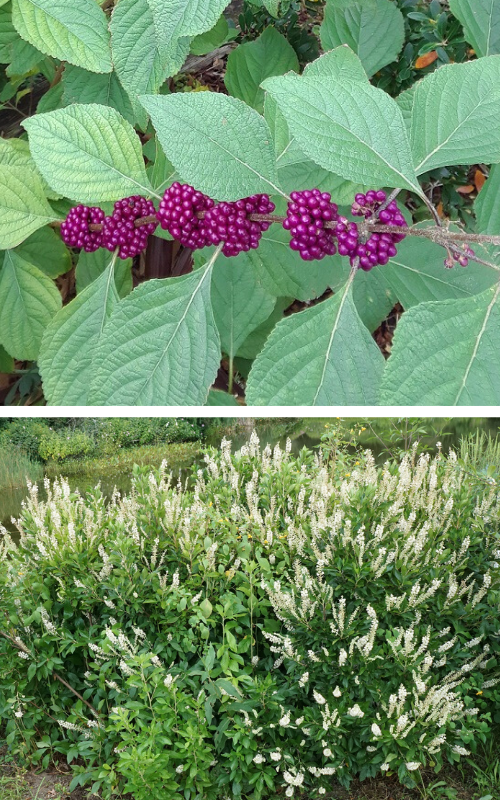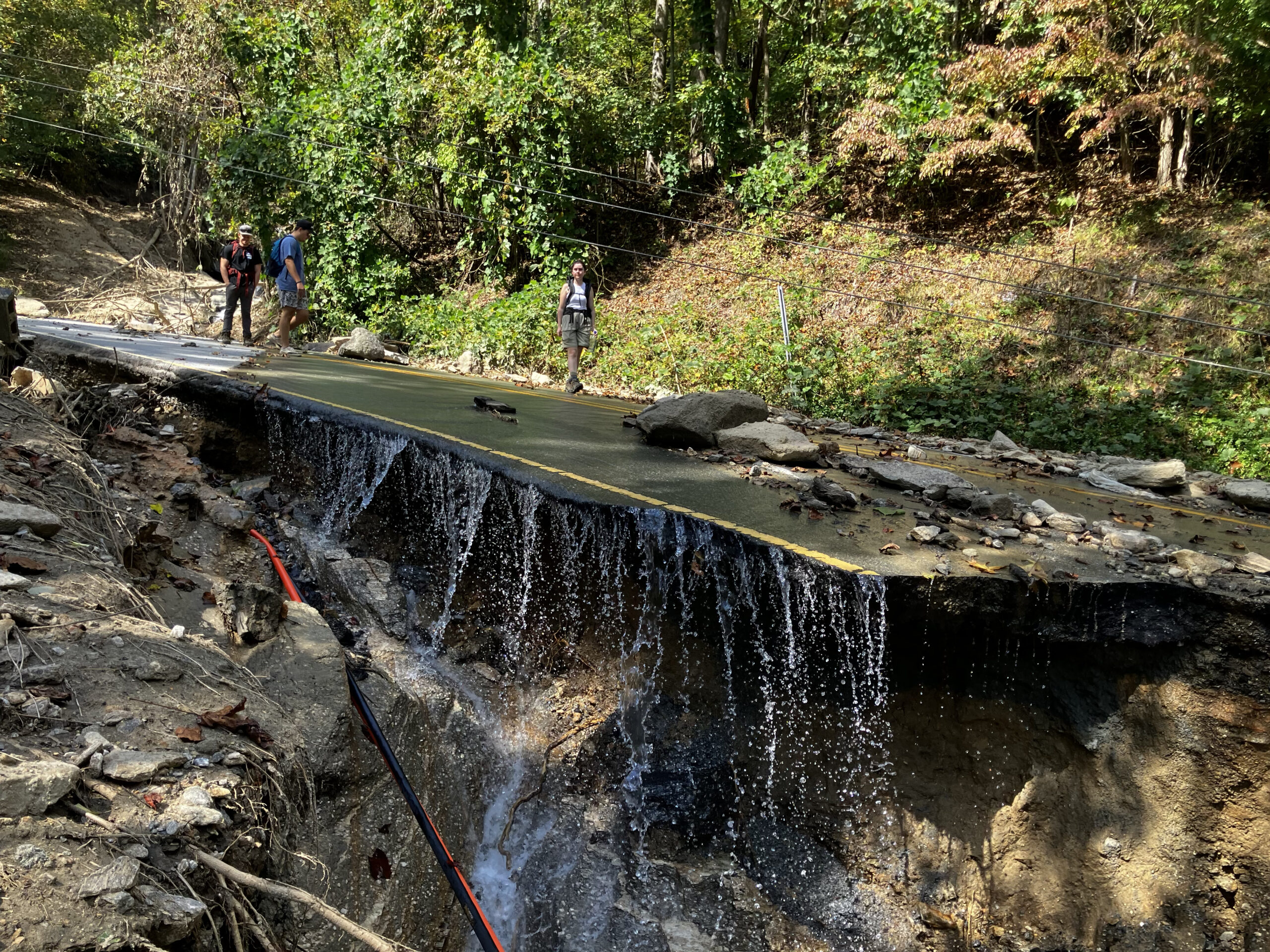New Video Series Highlights Native Plants for Coastal Landscapes

FOR IMMEDIATE RELEASE
Contact:
Katie Mosher, communications director, kmosher@ncsu.edu
Julie Leibach, science writer, julie_leibach@ncsu.edu
Just in time for autumn planting season, the Coastal Landscapes Initiative has released the first three videos in a series featuring native N.C. plants. Each video focuses on the plant’s main attributes and growing requirements, such as pollinator attraction and drought tolerance.
“We chose species that are ideal for a variety of coastal landscapes,” says Gloria Putnam, North Carolina Sea Grant’s coastal resources and communities specialist and project lead. “We hope that these videos will inspire home gardeners and professional landscapers alike to purchase these species at local nurseries and incorporate them into their plantings.”
The debut videos showcase:
- Red buckeye, a small tree with tubular scarlet flowers;
- American beautyberry, an understory shrub with stunning purple fruits; and
- Sweet pepperbush, a deciduous shrub with aromatic white flowers.
Future videos in the “Native Plant Pick” series will profile more shrubs and trees, as well as flowering perennial and grass species.

“Our team narrowed down a long list of potential plants to a dozen that stood out for a few key reasons, including their versatility, attractiveness, and wildlife benefits,” says horticulturist Kathy Mitchell, of Coastal Roots Garden Design. “The series really does have something for everyone.”
The videos add to a growing number of free resources from the Coastal Landscapes Initiative, a North Carolina-based effort to create landscapes that are beautiful, maintainable, cost-efficient, and environmentally beneficial. Other CLI offerings include a set of 10 landscaping design templates, as well as a handy booklet and brochure featuring 34 native plants that flourish along the N.C. coast. Those products are available in print as well as online.
“CLI members want to help people choose plants that are naturally adapted to thrive in the harsh conditions of the coast — the strong sun and wind, the dry, sandy soil, and the salty air and water,” Putnam says. “By incorporating native plants into your landscaping, you can enhance local ecosystems while cutting maintenance costs.”
The Native Plant Pick video team also includes horticulturist Rachel Veal of the N.C. Aquarium on Roanoke Island; consumer horticulture extension agent Emilee Morrison, of NC Cooperative Extension in Onslow County; conservation horticulturist Freda Pyron of the N.C. Aquarium at Pine Knoll Shores; Charley Winterbauer, co-chair of the Southeast Coast Chapter of the N.C. Native Plant Society; and North Carolina Sea Grant science writer Julie Leibach. Sea Grant’s Scott Baker produced the videos with assistance from videographer Shane Moore.
An overview of the Native Plant Pick series, plus the first three videos, are available on North Carolina Sea Grant’s YouTube channel, youtube.com/user/NCSeaGrant. Find more coastal landscaping resources at go.ncsu.edu/CoastalLandscapes.
##
- Categories:


